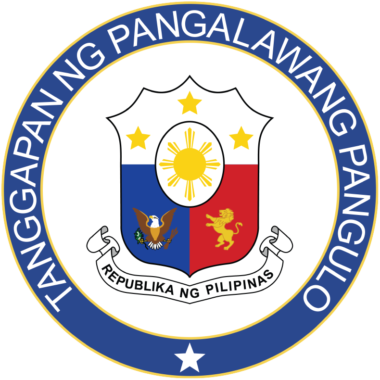Political satire has been deeply woven into the fabric of Filipino society since the Spanish colonial period. During the late 1800s, the revolutionary newspaper “La Solidaridad” became a platform for illustrators and writers to criticize Spanish colonial rule through biting satire and clever wordplay. The legendary Jose Rizal himself was a master of political satire, using his novels “Noli Me Tangere” and “El Filibusterismo” to expose colonial injustices through darkly humorous characterizations and situations. This tradition of using humor as a weapon against oppression would continue through generations, evolving with each new era of Philippine history.
The Golden Age of Editorial Cartoons (1950s-1990s)
The Rise of Editorial Giants
The post-war period saw the emergence of legendary editorial cartoonists who would shape political discourse through their artistry. Names like Corky Trinidad, Nonoy Marcelo, and Larry Alcala became household names, their work appearing in major newspapers and magazines across the country. These artists developed distinct styles that perfectly captured the Filipino sense of humor – combining sharp political commentary with cultural references that resonated with readers across social classes. Their cartoons served as daily commentary on political events, often saying more in a single panel than entire newspaper articles could convey.
Impact and Influence
Here’s a look at some of the most influential editorial cartoonists and their contributions:
| Cartoonist | Active Years | Notable Works | Impact |
|---|---|---|---|
| Corky Trinidad | 1960-2009 | Manila Chronicle cartoons | First Filipino cartoonist syndicated internationally |
| Nonoy Marcelo | 1965-2002 | Ikabod comic strip | Created iconic characters like Tisoy and Ikabod |
| Larry Alcala | 1946-2002 | Slice of Life series | Received National Artist award for Visual Arts |
Source: National Commission for Culture and the Arts (NCCA) Archives
The Digital Revolution: Memes as Modern Political Commentary
The Rise of Social Media Satire
The advent of social media transformed how Filipinos consume and create political satire. Facebook, Twitter, and more recently, TikTok have become breeding grounds for meme culture that often carries sharp political commentary. What makes Filipino political memes particularly interesting is their ability to combine current events with popular culture references, creating multi-layered jokes that both entertain and provoke thought. The rapid sharing capabilities of social media platforms have also democratized political satire, allowing ordinary citizens to become creators and commentators.
Viral Movements and Digital Activism
Recent years have seen several notable examples of meme-driven political movements:
| Year | Movement/Trend | Platform | Estimated Reach |
|---|---|---|---|
| 2016 | #Kalderona2016 | 2M+ engagements | |
| 2018 | #PepalMemes | 5M+ shares | |
| 2022 | #PoliticalTikTok | TikTok | 1B+ views |
Source: Digital News Report 2023, Reuters Institute
The Evolution of Satirical Styles
Traditional vs. Modern Approaches
The transition from editorial cartoons to memes represents more than just a change in medium. Modern Filipino political satire has developed its own unique characteristics while building upon traditional elements:
Traditional Elements:
- Detailed artistic renderings
- Single-panel storytelling
- Newspaper distribution
- Professional gatekeeping
- Weekly or daily updates
Modern Elements:
- Simple, reproducible formats
- Multi-platform sharing
- Instant viral potential
- User-generated content
- Real-time reactions to events
The Power of Humor in Political Discourse
Social Impact and Public Opinion
Political satire in the Philippines has consistently served as a pressure valve for social tensions while simultaneously acting as a catalyst for change. During the Marcos era, underground comics and satirical publications helped maintain opposition morale. Today, meme pages and social media accounts fulfill a similar role, using humor to address serious issues like corruption, poverty, and social inequality.
Research indicates the significant impact of political satire on public opinion:
| Medium | Trust Rating | Influence on Youth | Weekly Reach |
|---|---|---|---|
| Editorial Cartoons | 65% | 45% | 12M readers |
| Political Memes | 72% | 85% | 45M views |
| Satirical Videos | 68% | 78% | 30M views |
Source: Philippine Social Media Statistics 2023, We Are Social
Legal Boundaries and Creative Freedom
Navigating Censorship and Libel Laws
Filipino satirists have always had to balance creative expression with legal considerations. The country’s libel laws and cyber libel regulations have created interesting challenges for modern content creators. However, this has led to increasingly creative ways of delivering political commentary while staying within legal boundaries. Satirists have developed sophisticated techniques using metaphor, allegory, and clever wordplay to convey their messages without risking legal repercussions.
The Future of Filipino Political Satire
Emerging Trends and Platforms
The landscape of political satire continues to evolve with technology. New platforms and formats are emerging, while traditional forms adapt to remain relevant. Some notable trends include:
- Interactive satirical content
- Augmented reality political filters
- AI-generated political commentary
- Cross-platform storytelling
- Collaborative meme creation
Impact on Political Literacy and Civic Engagement
Education Through Entertainment
Modern Filipino political satire has become an unexpected tool for political education, particularly among younger generations. Studies show that young Filipinos are more likely to engage with political content when it’s presented in an entertaining format:
| Age Group | Preference for Satirical Content | Political Awareness Impact |
|---|---|---|
| 18-24 | 85% | High |
| 25-34 | 76% | Moderate to High |
| 35-44 | 62% | Moderate |
| 45+ | 45% | Low to Moderate |
Source: Youth and Political Engagement Survey 2023, Social Weather Stations
Cultural Significance and International Recognition
Global Impact of Filipino Political Humor
Filipino political satire has gained international recognition for its unique blend of humor and social commentary. The country’s meme culture has been featured in global media studies and digital culture research, highlighting the distinctive way Filipinos use humor to address serious political issues. This international attention has also led to collaborative projects between Filipino satirists and their counterparts in other countries, creating a rich exchange of ideas and techniques.
Conclusion: The Enduring Power of Filipino Political Satire
Political satire in the Philippines continues to evolve while maintaining its core function as a tool for social critique and political commentary. From the detailed pen strokes of editorial cartoonists to the viral spread of political memes, Filipino humor remains a powerful force in shaping public discourse and promoting political awareness. As technology advances and new platforms emerge, we can expect Filipino political satire to continue adapting and finding innovative ways to speak truth to power through laughter.
The Role of Responsibility in Modern Satire
Maintaining Ethical Standards
In an era of viral content and instant sharing, the responsibility of satirists has become increasingly important. Modern creators must balance the desire for engagement with the need for factual accuracy and ethical consideration. This has led to the development of informal guidelines within the community regarding fact-checking, source verification, and responsible content creation.
Disclaimer: This blog post aims to provide an informative overview of political satire in the Philippines based on publicly available data and research. While every effort has been made to ensure accuracy, the nature of digital media means some statistics may have changed since publication. We encourage readers to verify current data from official sources and report any inaccuracies to our editorial team at [email protected] The views expressed in satirical works referenced in this article belong to their respective creators and do not necessarily reflect the views of this publication.




